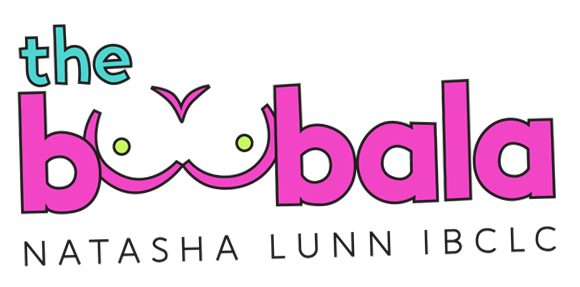Page Content
- What color is mastitis milk with E coli?
- How to fix hindmilk foremilk imbalance?
- How to tell if breast milk is bad?
- Is green breast milk safe to drink?
- Is foremilk bad for my baby?
- Why am I lactating green?
- Why is my breast milk mucus green?
- Does mastitis cause green milk?
- What causes green tint in breast milk?
- Can my baby drink green milk?
Understanding the Greenish Hue of Breast Milk
Breast milk is a remarkable substance, constantly adapting to meet the nutritional needs of a growing infant. One of the more surprising aspects of breastfeeding can be the color of the milk itself, which can range from white to yellow, and even to shades of green. If you’ve noticed a greenish tint in your breast milk, you might be wondering what causes this unusual color.
Common Causes of Greenish Breast Milk
The appearance of greenish breast milk is often linked to several benign factors. Dietary choices play a significant role; for instance, consuming large amounts of green vegetables, such as spinach or kale, can impart a green hue to your milk. This is due to the chlorophyll in these foods, which can be transferred into your breast milk.
Another common reason for a greenish tint is the presence of foremilk and hindmilk. Foremilk is the milk that is released at the beginning of a feeding, which is typically thinner and may appear bluish or greenish. Hindmilk, on the other hand, is richer and creamier, coming later in the feeding. If a baby is not nursing long enough to receive the hindmilk, the milk expressed may have a different color.
Is It a Cause for Concern?
In most cases, a greenish color in breast milk is not a cause for concern. It is a normal variation that many breastfeeding mothers experience. Experts emphasize that the body is constantly changing, and these changes can reflect in the milk’s appearance. However, if the color change is accompanied by unusual smells or other symptoms, it may be worth consulting a healthcare professional to rule out any underlying issues.
Conclusion
In summary, a greenish tint in breast milk is usually harmless and can be attributed to dietary influences or the natural variations in milk composition. As always, if you have concerns about your breast milk or your baby’s health, it’s best to seek advice from a lactation consultant or healthcare provider. Remember, your body is doing an incredible job of nourishing your baby, and these color changes are just one of the many fascinating aspects of breastfeeding.
What color is mastitis milk with E coli?
The changes in milk are related to the causal organism with clots and flakes tending to be more common in mastitis due to Staphs and Streps, while straw-coloured milk is typically associated with E. coli.
How to fix hindmilk foremilk imbalance?
Adding more feedings to your baby’s schedule can help ease their pain, but it can also worsen the problem. A reliable way to treat foremilk/hindmilk imbalance is to separate your breast milk. Bottle feeding your baby less foremilk and more hindmilk will help them easily digest the lactose present in your milk.
How to tell if breast milk is bad?
Human breast milk can spoil just like any other kind of milk. This leads to a sharp, sour smell and flavor. There’s no way to save spoiled milk. You should be able to tell it’s spoiled by tasting a sip of it yourself.
Is green breast milk safe to drink?
GREEN: If you are eating a diet full of cruciferous and leafy greens or algae-seaweed supplements, your breast milk may take on a green appearance. 3 That’s okay because these foods are full of vitamins and nutrients that are good for you and your baby.
Is foremilk bad for my baby?
Too much foremilk can cause gassiness and spit up because of too much lactose being emptied into their bowels. This can also cause a baby to eat more frequently because the foremilk does not actually fill their little tummy up — and you know everyone wants to nurse constantly.
Why am I lactating green?
Thick or sticky discharge that is green, greenish brown or reddish brown may be caused by a non-cancerous condition called mammary duct ectasia. Yellow and foul-smelling pus may be caused by a breast infection. Milky white discharge from both breasts may be caused by some medicines or endocrine gland problems.
Why is my breast milk mucus green?
Thick or sticky discharge that is green, greenish brown or reddish brown may be caused by a non-cancerous condition called mammary duct ectasia. Yellow and foul-smelling pus may be caused by a breast infection. Milky white discharge from both breasts may be caused by some medicines or endocrine gland problems.
Does mastitis cause green milk?
Other common causes of green breast milk include: sports drinks containing green dye. multivitamins or iron supplements, though it’s unclear why these might turn breast milk green. an infection, such as mastitis (see treatment information below).
What causes green tint in breast milk?
Your diet can influence the color of breast milk in various ways. Consuming large amounts of green vegetables like spinach or kale may give the milk a greenish tint, while foods rich in beta-carotene, such as carrots or sweet potatoes, can cause an orange or yellow hue.
Can my baby drink green milk?
Children can now have either pasteurised whole (blue top) or semi-skimmed cows’ milk (green top) as a main drink from age 1 year as well as pasteurised goats’ and sheep’s milks.

